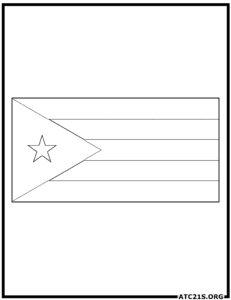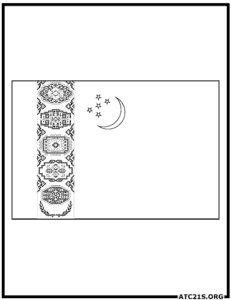Bhutan Flag Coloring Page Download
Bhutan Flag Description
The flag of Bhutan is a unique and distinctive flag that holds great significance for the country. It consists of a diagonally divided rectangle with a dragon across the middle. The upper part of the flag is golden yellow, symbolizing the secular power of the king, while the lower part is orange, representing the religious power of Buddhism.
The dragon on the flag is known as Druk, which means “thunder dragon” in the Bhutanese language. The dragon is depicted in white, symbolizing purity and loyalty. It holds jewels in its claws, representing wealth and prosperity. The dragon also holds a flaming jewel in its mouth, which represents the country’s commitment to spiritual and material wealth.
The flag of Bhutan has a rich history that dates back to the early 20th century. Prior to 1907, Bhutan did not have a national flag. However, in 1907, the first king of Bhutan, Ugyen Wangchuck, was crowned and a national flag was introduced. This flag consisted of a yellow dragon on a red background.
In 1956, a new flag was adopted under the reign of the third king, Jigme Dorji Wangchuck. This flag featured a white dragon on a dark blue background. The dragon was slightly different from the current design, as it had a green color on its body. This flag remained in use until 1969.
The current flag of Bhutan was officially adopted on January 6, 1972, under the reign of the fourth king, Jigme Singye Wangchuck. It was designed by Mayum Choying Wangmo Dorji, the sister of the king. The flag was chosen to represent the country’s unique identity and its commitment to Buddhism and the monarchy.
The flag of Bhutan holds deep symbolism for the country. The dragon represents the mythical creatures that are believed to protect the country and its people. The colors of the flag also hold significance, with yellow representing the king’s secular power and orange representing the religious power of Buddhism.
Overall, the flag of Bhutan is a powerful symbol of the country’s history, culture, and values. It represents the unity of secular and religious powers, as well as the protection and prosperity of the nation.












